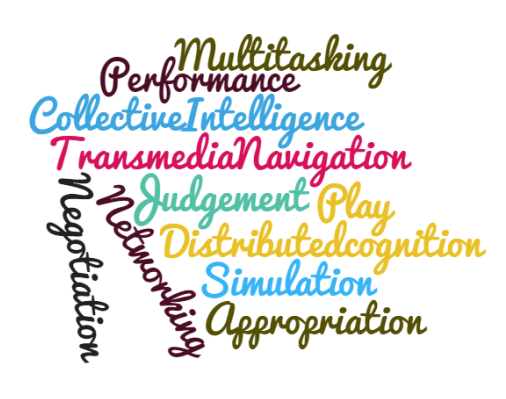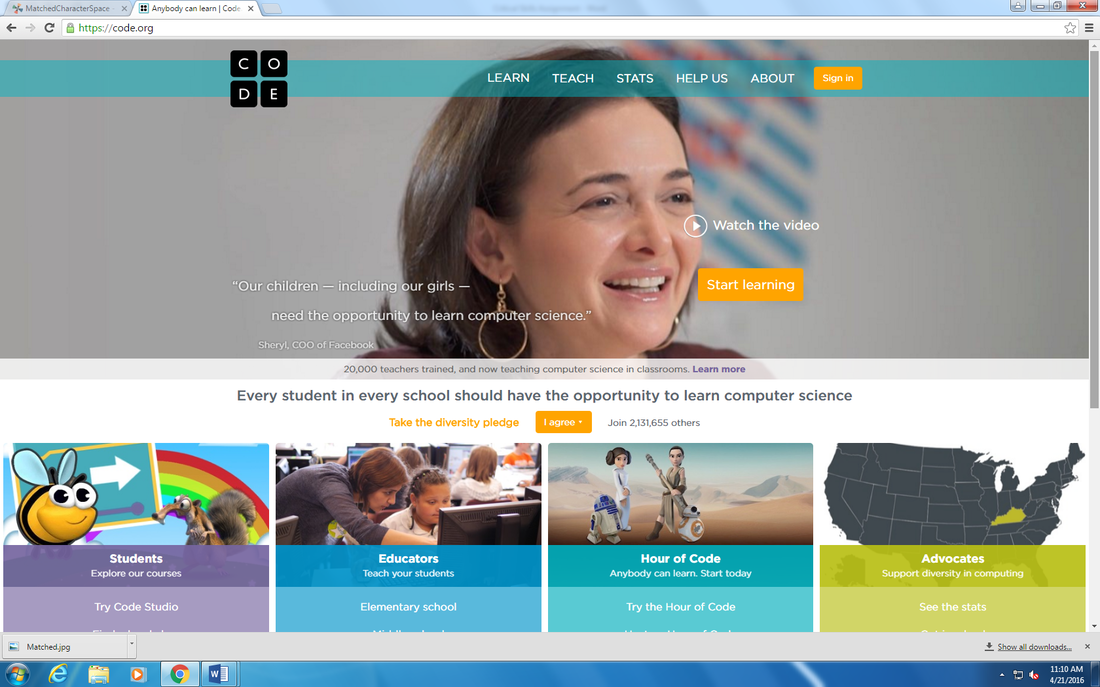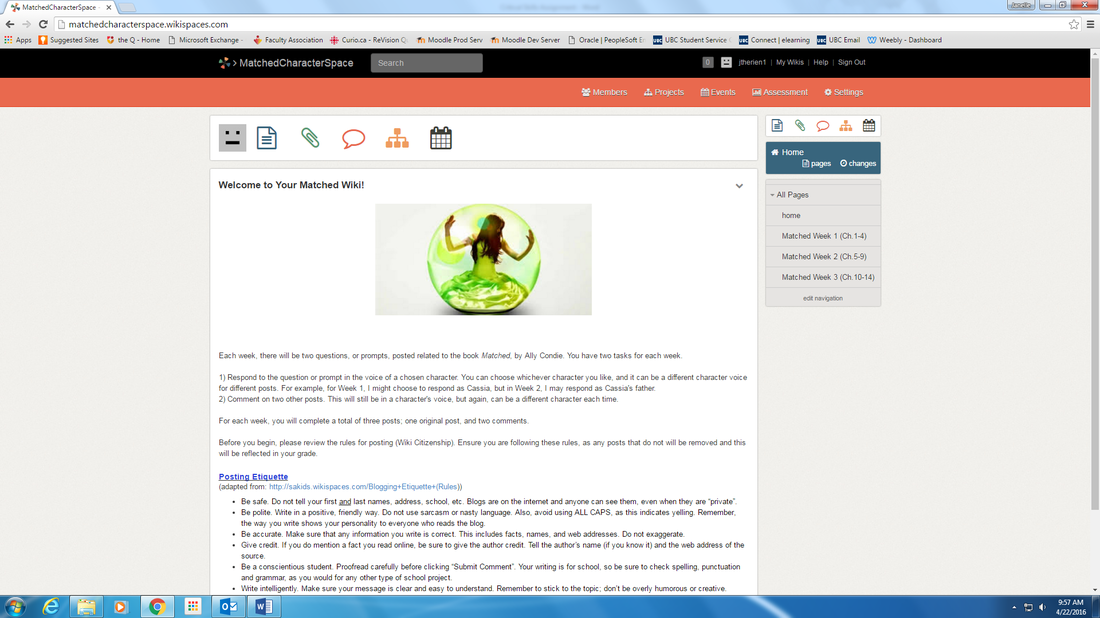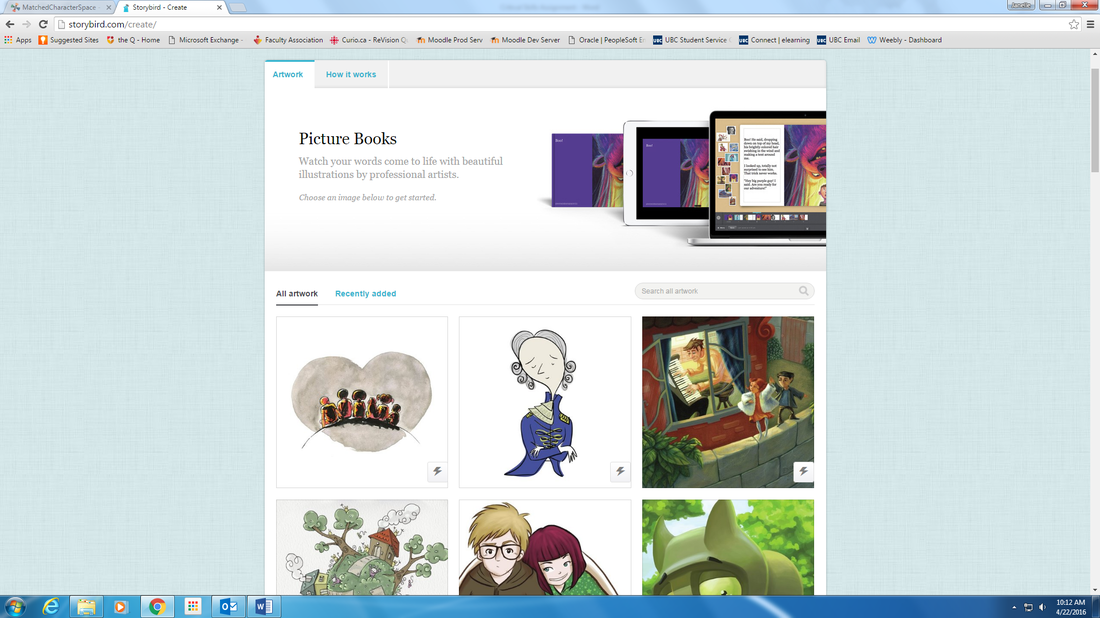With the busy life of a teacher and a student, it can be hard to take time to reflect on what is going on in the classroom, and how it is working (or not working). I decided to use a blog to showcase some of what I am doing on a more ongoing basis. As you can see, this is brand new :)
While it is not really feasible to include all of these attributes in one project, I thought by giving my students three options, I could allow students to choose a project based on curiosity and interest, and provide at least some elements of media literacy.
Learn to Code
| From the Assignment: Learning to code is something that people often think is quite daunting! There is an idea floating around that coding is only for a certain group of really smart people, and the rest of us don’t have a chance. But that’s not true! There are programs now that use building blocks to code, so you don’t have to know the very technical language that is required to write code. We will explore this through www.code.org. If you choose this option, you will complete a twenty (20) hour course to learn the basics of coding. You will have six (6) weeks to complete the course, which means a little over three (3) hours each week. Before you choose this option, we will try out “Hour of Code” to see what the course will be like. |
Participate in an In-Character Wiki
| From the Assignment: This option will only happen if a minimum of four people choose it, because we need enough people to keep discussions going. We will create our wiki through https://matchedcharacterspace.wikispaces.com/ Each week, there will be at least two questions, or prompts, posted related to the book Matched, by Ally Condie. You have two tasks for each week. 1) Respond to one question or prompt in the voice of a chosen character (at least 200 words for each post). You can choose whichever character you like, and it can be a different character voice for different posts. For example, for Week 1, I might choose to respond as Cassia, but in Week 2, I may respond as Cassia's father. 2) Comment on two other posts (at least 100 words for each post). This will still be in a character's voice, but again, can be a different character each time. For each week, you will complete a total of three posts; one original post, and two comments. |
Create a Digital Story
| From the Assignment: This option will be completed in pairs. Together, you will write a children’s story, a picture book, using www.storybird.com that is at least 1000 words long, and at least 15 pages long. Storybird is a program that allows you to use professional art, provided by hundreds of artists, to illustrate a story. Your story will demonstrate theme, plot elements, character development, and literary devices. Read over the questions below and the grading criteria before you begin to ensure you have included all necessary pieces. The best way to tackle this will be to think about a theme you would like to write about, and then to search for art that could support the theme. For example, if I would like to write about the difficulty of learning a new language, I will have to find art that fits with that theme; maybe children in a school setting, or maybe even animals that I will personify. |
Assessment
Students were assessed on the project in three ways: based on completion (quantity), based on a rubric (quality), and based on a self-assessment (reflection). The rubrics and self-assessments were specific to each project.
| | |
It took a lot of time at the outset, to set tasks, explain requirements, and provide support, but it wasn't long before the students became each other's primary support! Overall, the project was well-received and many students requested to repeat the project so they could try out a different technology-based task.
Isn't sneaky teaching/ learning the best?!
Until next time, cheers!
Isn't sneaky teaching/ learning the best?!
Until next time, cheers!
References:
Jenkins, H. (2009). Confronting the challenges of participatory culture: Media education for the 21st century. Cambridge, MA: The MIT Press.
Jenkins, H. (2009). Confronting the challenges of participatory culture: Media education for the 21st century. Cambridge, MA: The MIT Press.




 RSS Feed
RSS Feed